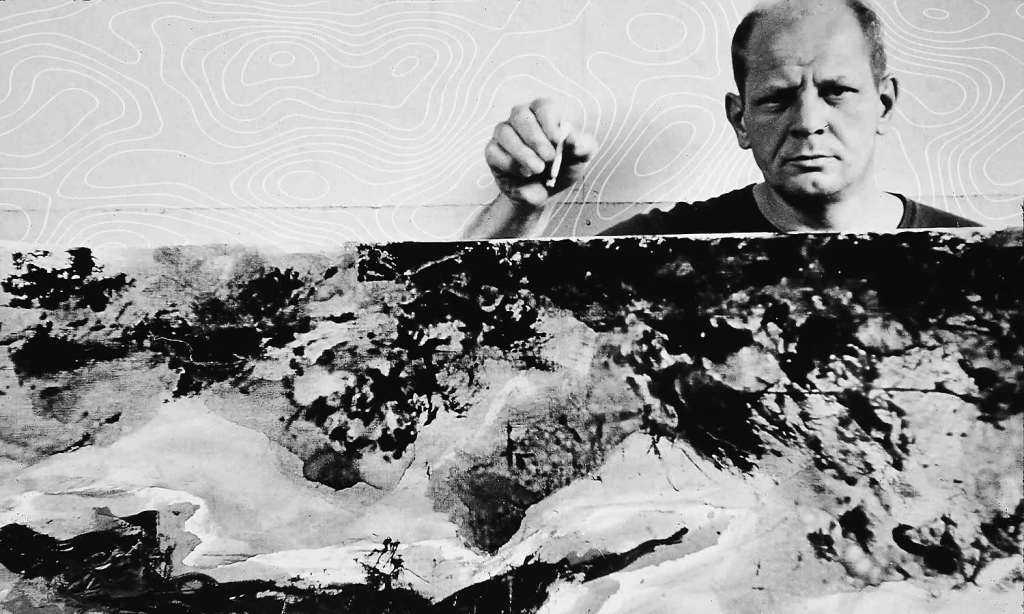Researchers from the Kellogg School of Management at Northwestern University, Illinois think they’ve worked out exactly what it takes to hit a creative hot streak and find success and stardom on the level of Jackson Pollock, Van Gogh, or Peter Jackson.
All you need to do is explore and then specialise. Boom, instant success.
Okay, it’s a little more complex than that — but not by much.
Using artificial intelligence to mine big data related to artists, film directors and scientists, the Northwestern researchers discovered that this pattern of exploration and specialisation is not uncommon amongst but, instead, actually seems to be the magic formula for success.
They use the example of famous abstract expressionist painter Jackson Pollock — you know, the guys who did all the splatter paintings — to show that Pollock experimented in drawing, print making, surrealism, and various other methods of artistic expression before finding the one that worked for him.
Once he did, a three year period followed in which he created all of the drip splatter paintings that he became famous for.
This period is what the researchers term the “hot streak” of creativity, but they don’t just come out of nowhere. Instead, hot streaks, they found, directly result from years of exploration studying diverse styles or topics followed by years of exploitation in focusing on a narrow area to develop deep expertise.
“Neither exploration nor exploitation alone in isolation is associated with a hot streak. It’s the sequence of them together,” said Dashun Wang, who led the study.
“Although exploration is considered a risk because it might not lead anywhere, it increases the likelihood of stumbling upon a great idea”
“By contrast, exploitation is typically viewed as a conservative strategy. If you exploit the same type of work over and over for a long period of time, it might stifle creativity.
“But, interestingly, exploration followed by exploitation appears to show consistent associations with the onset of hot streaks.”
In 2018, Wang and his colleagues published a paper in Nature, characterising hot streaks in artistic, cultural and scientific careers. After establishing that these creative hot streaks do indeed occur, Wang was motivated to discover what triggers them. He found a clue while visiting the Van Gogh Museum in Amsterdam.
Van Gogh experienced an artistic breakthrough from 1888-1890, during which he painted his most famous works, including ‘The Starry Night’, ‘Sunflowers’ and ‘Bedroom in Arles’.
Before that, however, his work was less impressionistic and more realistic. He also tended to use sombre earth tones rather than the bright, sweeping colours, for which he is best known today.
“If you look at his production before 1888, it was all over the place,” Wang said.
“It was full of still-life paintings, pencil drawings and portraits that are much different in character from the work he created during his hot streak.”
In the new study, Wang’s team developed computational methods using deep-learning algorithms and network science and then applied these methods to large-scale datasets tracing the career outputs of artists, film directors and scientists.
They mined data from 800,000 visual arts images, 79,000 films from IMDb listings, and the careers of over 20,000 scientists from the Web of Science and Google Scholar databases.
They identified a hot streak within each career then correlated the timing of the streak with the creative trajectories of each individual. Looking at careers four years before and after the hot streak, the researchers examined how each individual’s work changed around the beginning of a hot streak.
The team found that when an episode of exploration was not followed by exploitation, the chance for a hot streak was significantly reduced.
Similarly, exploitation alone — that was not preceded by exploration — also did not guarantee a hot streak.
But when exploration was closely followed by exploitation, the researchers noted the probability of a hot streak consistently and significantly increased.
On average, a hot streak for an individual tends to last about five years. After that, the researchers found, individuals return to “normal” and no longer follow any pattern of exploration or exploitation.
With this understanding of what triggers a hot streak, researchers hope that institutions will be able to intentionally create environments that support and facilitate hot streaks in order to help members thrive.
Read more stories from The Latch and subscribe to our email newsletter.







